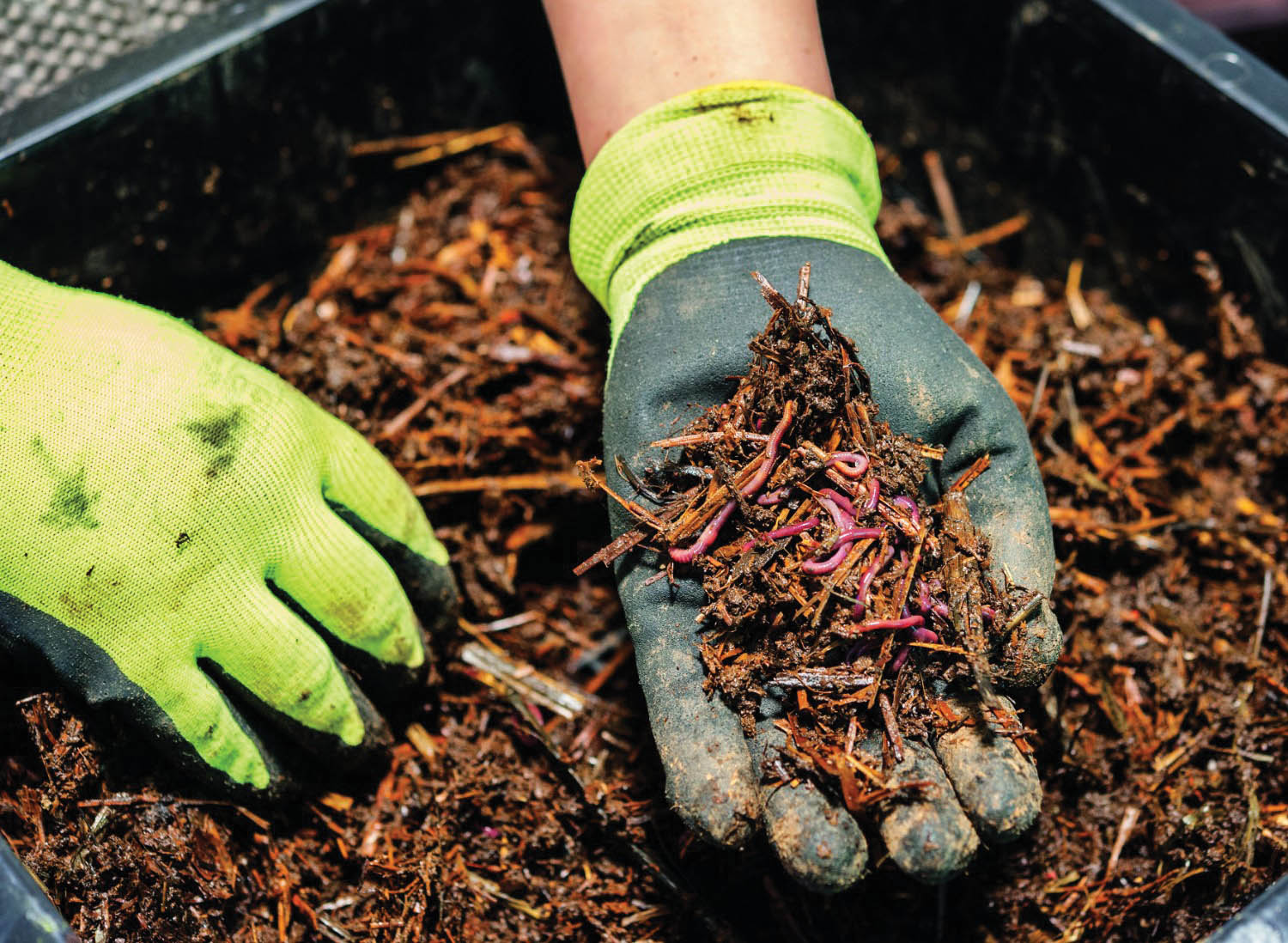The cool sunny days of June are a great time to begin projects and to plant dormant trees, shrubs and perennials
Cool & Temperate
Veggies
June is a great time to plant dormant asparagus, artichoke and rhubarb crowns into beds enriched with compost or aged manure. All are long-lived, producing reliably for years. If these crops are already in the vegie garden, cover with a mulch of manure and compost to feed the spring harvest. Also plant broad beans, garlic, lettuce, peas, shallots and spinach. Stagger lettuce and spinach to avoid a glut by planting new seedlings or sowing seeds every three to four weeks. Help pea seedlings reach their climbing support by using twigs to allow them to climb onto trellises or stakes.
Regularly inspect brassicas (including cabbages and broccoli) for snails, slugs and caterpillars. The green caterpillars of the cabbage white butterfly are especially damaging to many winter crops, in particular new plantings. Keep them in check by hand-picking caterpillars daily. Alternatively, spray with Dipel (an organic spray) when pests are observed. Liquid-feed leafy winter crops such as silver beet, spinach, lettuce, coriander and rocket. Apply liquid organic fertiliser every 7–10 days.
Fruit
Where heavy crops are weighing down citrus branches, thin fruit and support branches with props. Also winter-spray foliage with horticultural oil to target immature forms of bugs such as bronze orange bug. Bare-rooted deciduous fruit trees are available now. Many need cross-pollination for successful cropping, so it’s important to plant the necessary pollinator. Compatible pollinators are needed for most apple, pear, plum and cherry varieties and many others. If harvests have been low or non-existent on established trees in the orchard, fruit set may be improved by adding a pollinating variety. Where space is at a premium, look for multi-grafted trees that include a pollinator. Also consider installing a beehive to improve pollination. Find out about beekeeping courses in your area at TAFE or through a local beekeeping group, and check local council bylaws. Also spray deciduous fruit trees such as plums with a copper-based spray before growth resumes. Prune grapes and kiwifruit after harvest.
Compost & Soil
Where the winter ahead is cold and wet, compost heaps can be covered to keep them from becoming soggy, cold and inactive. Continue to rake and bag fallen leaves or add them to the compost heap, layering dry leaves with green material such as weeds, kitchen scraps and fresh manure. Also turn and aerate heaps regularly to keep them composting despite the colder temperatures. Expect vermin to seek out winter quarters in compost heaps or beneath earth floors in the chook shed. These pests are difficult to deter. Reduce breeding sites and food and make access hard. For example, laying a cement floor in the chook run and storing food in lidded bins can help reduce numbers. Restrict vermin entry to compost heaps by using wire barriers in the soil around the base of the heap. Move worm farms into a warmer area to keep worms comfortable during winter. Very cold winter temperatures can kill them. Keep ahead of weeds by lightly hoeing among rows of winter veggies or in fallow beds.
Tropical
Veggies
During June, you should continue to water all vegetables, especially where conditions are dry or plants are grown in containers or raised garden beds. Use a liquid feed to keep plants growing. Apply every 7–10 days. Spending even a few minutes each day in the vegie patch reduces potential problems. Visit the vegetable area to look for pests, including caterpillars. Squash pests to stop them eating crops. Remove diseased leaves and harvest crops that are ready to use. Keep planting. Peas provide a fast harvest in winter. Root vegetables including carrot, radish and beetroot can also be planted now. For fast-maturing root crops, choose baby forms such as baby beets and carrots, which are also good options for container growing. Also plant cabbage, corn, squash and zucchini. Plant corn in blocks as this aids fertilisation of the cobs. In inland areas, protect susceptible vegies such as capsicums and tomatoes from frost.
Fruit
Harvest citrus as needed, keeping plants deeply watered and well mulched. Where space is tight, grow dwarf varieties. Most dwarf trees are grafted onto dwarfing rootstock to reduce plant size without reducing the size of the fruit. (See page 22.) Combat pests and diseases by pruning, clearing and spraying. Prune grapes and clear up around fruit trees, removing fallen leaves and diseased fruit. Prevent black spot on pawpaw with regular doses of liquid seaweed to strengthen cells. Treat trees with copper spray after harvest. Mow weeds around fruit trees and remove invasive grasses, especially around trunks. Cover cleared areas with organic mulch. June is also an ideal time to clean out the hen house and spread soiled straw under fruit trees. This is also a good time to build permanent structures around fruit trees to prevent birds attacking crops.
Compost & Soil
Turn compost heaps and add extra moisture if the heap is dry. Continue to build healthy heaps by adding a balance of wet and dry materials, such as vegetable scraps and lawn clippings layered with dry leaves and chopped, disease-free garden prunings. Deter weeds in bare soils and among the vegetables by undertaking regular hoeing and applying mulches. As well as deterring weeds, and even without digging, a mulch layer can improve the soil beneath making it easier to dig and better for plant roots to establish. In fire-prone areas, however, scrape away organic mulches and replace with gravel or recycled inorganic mulch for protection against spot fires. Where soils are very dry and difficult to wet due to root competition from surrounding trees, consider erecting raised beds for vegetable crops. Line the base with a weed mat or geotextile fabric to exclude invasive roots.
Written by Jennifer Stackhouse
Originally in Good Organic Gardening Volume 8 Issue 1











